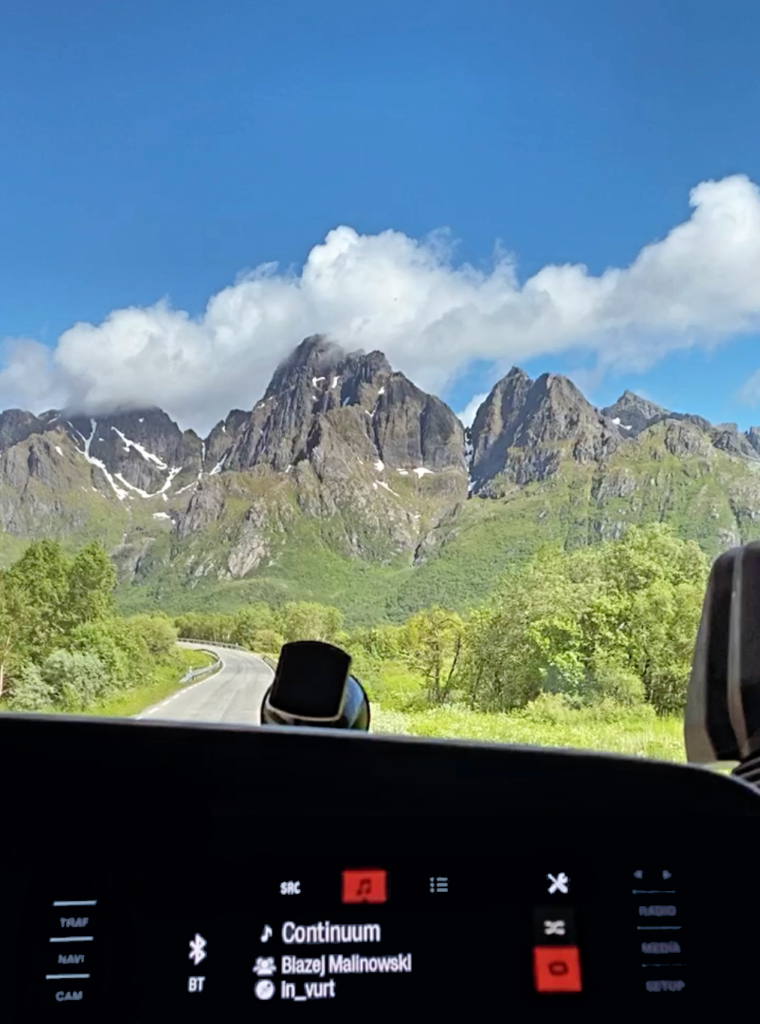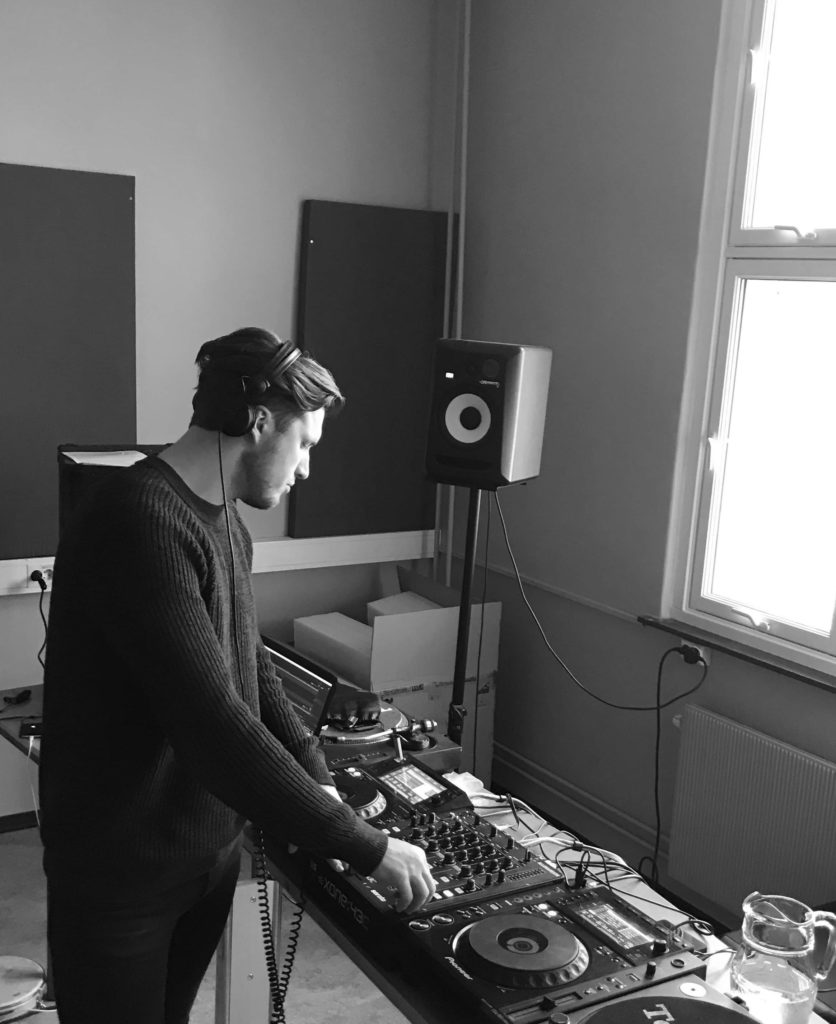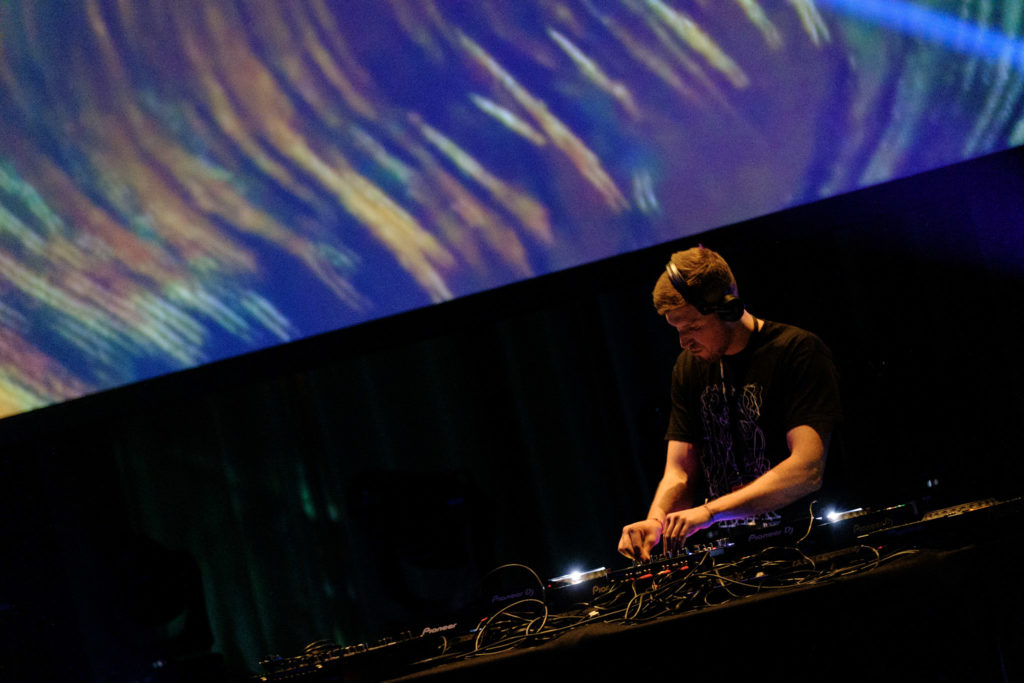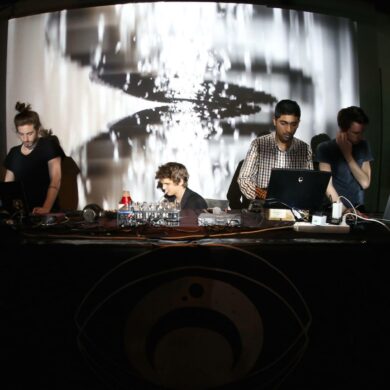Released on June 17, 2021, “Oslated Special Mix 006” by Pijãr is phenomenal. We analyse it in deep and use it as a pretext to introduce its author.
Contents
1. Portrayal of the artist
2. Context
3. Close-up on the mix
4. Interview on a selected topic
5. Tracklist
6. Links
THE TRAVELLER
Norway is first a kingdom of nature before being a political one, with its vertical mountains, its half-million freshwater lakes and its Aurora Borealis crown. This is where Arikas Pačešiūnas AKA Pijãr lives, on a northern coastal Island named Hinnøya.
Located north of the Arctic Circle, the area is under the dark blue polar night in winter, and the midnight sun for the rest of the time; a sun that forever rolls on the horizon with warm colours.
Like most artists who have a more passionate than a financial relationship with music, Pijãr pays the bills with a day job that takes a very special dimension in a country like Norway. He crosses territories in a truck, spending hours in front of gorgeous landscapes, listening to hypnotic techno all the way; an intriguing mix from Javier Marimon, a chilling album from Adhémar or the great compilation in_vurt. “The truck is pretty cool for having an eight-channel surround audio system, including a subwoofer, so I definitely enjoy my trips,” he says. “I spend many hours with hypnotic techno on a daily basis, to the point that I could add a label “Techno Truck” at the back of the vehicle. I also listen to audiobooks sometimes, to change the flavour a bit and avoid my truck becoming a spaceship.”

Pijãr spent his youth in Lithuania, his birth country, representing a generation of gamers and clubbers, not really in line with what society had to offer. It all started when, at age 15, he pushed the door of a DJ school, without knowing what DJing was, just for the pleasure of learning something new in a Soviet culture that was limiting the entertainment options. He remembers: “When I saw the CDJ-200 and the turntables with so many buttons and lights, it wowed me and motivated me to try. In fact, it was more a place to practice than a school. I was going there with a friend and discovering this world motivated us to drop some parties for our class, just for fun, using the smoke machine and playing various music, from electro to “Ice Ice Baby“.” he laughs.
Immersed in the nightlife at a young age, he then followed the various festive electronic music genres, dancing on the Tecktonik electroclash, having fun with his numerous friends. Parties, parties, parties, but with a euphoria that was hiding less and less a nascent anxiety for not having serious life plans. Aged 18, he decided to join his sister who was living in Norway, as a first important adult decision, running away from a world that wasn’t opening interesting doors, but without disconnecting himself totally from it.
While in Norway, Pijãr often returned back to his home country during the holidays, unable to solely hang up on the night’s calls, going from club to club, dancing on the EDM. Aged 21, he made his first entry into a newly opened underground temple named Lizdas, in Kaunas, which forever changed his view on electronic music: “Despite my colourful clothes that were not matching with the seemingly dark dress code of the place, I felt instantly connected with it, discovering likeminded people. It has been such a great first impression that for my friends and me, it became a second home for the next weekends.”
Before returning back to Norway, Pijãr built a Facebook group, originally named “Tamsioji pusė” (“The dark side”), to keep in touch with his friends. It ended up becoming an entire community of the Lithuanian scene, giving him an interesting card: “My friends and I started to communicate with Lizdas’ owners, saying that we have this community and that we could drop parties. We were ten to fifteen people regularly going there, so they knew us and offered us two events per year. The approach has been very spontaneous: when you are young, you don’t plan, you just go for it and see what happens.”
That’s when Pijãr took the DJ art form more seriously, particularly during the pandemic crisis, which was closing all the dance floors worldwide and which was therefore giving him time to practice. A mix from Monument Podcast plunged him into the hypnotic techno world. Caught a passion for the music, which he started to play every day in his truck, he interacted with the Norway-based platform and became one of its social media coordinators.

In Norway, Pijãr practised DJing more regularly in an empty room of a radio building, set at his disposal thanks to a Reggae DJ friend, who then gave him his first experiences behind the decks in a local bar. Last year, he got picked with three other artists in the talent program of a festival, after having sent a mix. He multiplied the DJ activities, recording online podcasts, playing in Norwegian pubs, closed parties, and taking part in a DJ collective named Behind The River, bringing interesting plans, such as a memorable mix in Norwegian nature.
Recently, he uploaded another resounding set, for one of the scene’s most respected labels, Oslated, delivering one hour of pure bliss, while experimenting with a new direction. Oslated, based on the beautiful Jeju Island in South Korea, is half a world away, but is nevertheless an ideal platform for Pijãr, to share the deep sound and philosophy that he values.
FROM HINNØYA TO JEJU ISLAND
Two Islands, two opposite climates and environments, 7000 km between both, but one deep connection through the organic atmospheric techno. Oslated’s owner Jong-min Lee and Arikas Pačešiūnas are good music friends, having regularly crossed each other in their respective networks, as well as in the 2019 Monument Festival.
On top of being a talented DJ and a passionate collector, with great leadership qualities, Arikas has a very gentle and kind soul. (Jong-min Lee, 2021)
Oslated is well-known by us, by you, but what people don’t necessarily remember, is that it was first and foremost a weekly podcast before becoming a distinguished record label. Named “Oslated Mix“, with more than 200 entries – including the #153 that we reviewed – the series lasted from 2016 to 2020 and has been one of the first in Asia entirely dedicated to supporting unknown talented artists in our scene, without hunting for glory, in the pure underground spirit.
From April 2020 to April 2021, the label created “Oslated presents CALMA Mix series” to promote the Spanish team, and since November 2020, “Oslated Special Mix” exclusively for the friends of the label. Pijãr recorded the sixth episode, which we review today.
SURPRISES AND CONTEMPLATION

① The track selection
The mix kicks off with an ode to nature, a rich one, creating an immediate wonder and immersing the listener both in Pijãr’s refugee and Oslated’s sonic world. It’s not so common for a mix to have a 15-minute ambient introduction, except in the atmospheric techno world, where talented artists such as Cobahn, Yukari Okamura and Pijãr, with their sensitivity and skills, can make it last forever without being tedious. Pijãr’s introduction has character, evolving in various colours from light to dark, and then comes the beat. Pijãr has chosen 140/70 BPM tracks, which never sound aggressive but rather subtle, with a game of percussions that contribute to the richness of the depicted nature. It’s time to mention Pijãr’s specific talent as a gold digger.
While being young and having joined the hypnotic techno movement not very long ago, the Norwegian artist made himself a name in our community for constantly sharing dope tracks. When he posts, we listen. Well-established artists comment, while being usually silent. Such skills can’t be explained merely to what Hinnøya’s environment potentially brings or to the long hours spent in the truck listening to hypnotic techno. This is talent, before anything else.
It doesn’t mean that all the tracks of the mix are totally unknown: telling a story sometimes requires specific sounds, and there can be other reasons as well: “A hint of nostalgia made me drop “Harre” by Alan Backdrop.” he admits. The set contains its necessary share of rarities and discoveries still, offering to the listener a wide spectrum of colourful – sometimes surprising – pieces, as well as various moods.
The mix ends with “Las Aves Que Volvieron” by OO, an enigmatic duo very involved in the Chinese experimental scene, whose track takes the time to install the end of the journey, while also building up some palpable tension.
Pijãr commented Hinnøya’s particular arctic light, saying: “Living in such an environment teaches lessons on harmony, balance and life as a circle”, with the “circle” being a recurrent geometric form in the artist’s representations (and not too unfamiliar for us as well).
The outro ends with similar field recordings found in the intro, somehow closing the “circle”, but with one side positive, warm, and the other worrying, ominous, a pessimistic message on what nature is becoming over time could be found in the artist’s musical language, giving to the end of the journey a cold but yet profound meaning.
Art is always more talkative than words.
② The management of the energy
While the original hypnotic techno sound from Detroit was minimalist and alienating, the Italian school injected a relaxing/chilling flavour into it and Dino Sabatini in particular, pushed the concept further by slowing down the tempo. Such a process brought contemplation to the heart of the music, well understood by the Belgian painter and producer Adhémar, who started to design entire low-pitched releases and mixes, creating an inspiring movement in the hypnotic techno DJ culture. The artists from Horo, in contrast, explored a more intense side of the contemplation, with “140 BPM mixes that sound 70 BPM” and impactful rhythms.
“Somewhere in the middle” – also using 140 BPM tracks but in a more channelled energy – are artists such as Javier Marimon, Konduku, Garçon and newly: Pijãr, with the present mix.
The approach of all these artists magically replaces the “mountain pattern” type of build-up, usually necessary to provoke a long-lasting emotion and keep the listener alert.
Without such a pattern, a mix can quickly become boring, even in the atmospheric techno realm, but in this particular set, Pijãr didn’t have to use it. Through the brilliant track selection, at the same time consistent and creative, complemented with a smart game of tension, he brought various rich soundscapes to explore and therefore maintained interest until the end, with an emotion emphasised by the percussive speed.
It works perfectly: the talent to dig for music, added to smart combinations and a well-chosen tempo, have been Pijãr’s secret weapons to make his set captivating.
③ The technique
The sensitivity to find interesting tracks also works on the transitions: each of them is impeccable, while the atmospheric techno – maybe more than any other genre – can easily veer toward outrageous clashes of melody.
The mixing is globally harmonious, even if the set admittedly doesn’t feel like a “one-hour-long track”. Again, it’s composed of various soundscapes “made to surprise” and maintain interest, and the juxtaposition of each of them remains consistent.
INTERVIEW ON A SELECTED TOPIC
Pijãr shares some of his views and musical approaches.

How did you approach this mix and what does Oslated represent for you?
Creating a mix has never been an easy task for me. I want my listeners to live a descent sonic experience, with interesting storytelling. It requires deep research. The pandemic crisis at least gave me the necessary time to dig deep into my collection, as well as explore new concepts. The lockdown, challenging for everyone, moved me away from the dance floor, which had an impact on my artistic mood. While making usually more club-oriented mixes, I’ve chosen a more peaceful topic for this one and came up with the idea to base my set on 140/70 BPM tracks. I thought that this framework would make things easier, but later found out that I don’t have so many tracks that have these tempos. However, I needed to open myself to something deeper in terms of energy and progression and stick to the original plan.
About Oslated, I’ve always seen the platform as an important one for new upcoming artists, since the beginning of my DJ career. No matter if it’s for its premiering program, its mix series or its releases, I try to show some solidarity and support to the label as a matter of love and respect. Working at Monument allowed me to build a friendship with Jong-min Lee and after having spent some time with him at Monument festival, we became even better friends. I am very happy to meet human beings like him, who are very passionate about what they are doing: they inspire and motivate me. Long life to Oslated.
Could you share and comment on the hypnotic/atmospheric techno artists and labels that interest you the most at the moment?
Besides Oslated, I’m very inspired by the Italians Simone Bauer, Formant Value, Marco Shuttle, Feral and Plants Army Revolver, for their unique sound design. I am not sure which spell lives inside the Italian hypnotic techno, but I feel very attracted by its vibe and ways of thinking.
It would be a shame not to add a talented Russian artist to the list, named Toki Fuko. This man surprised me so many times this year, with his releases on Annulled Music, Silent Season and Affin in particular. I feel a deep spirituality coming out of his electrifying work.
I would also like to mention some upcoming artists from Columbia: Zemög, Launaea, Szórëgg; they recently came up with very positive organic and tribal outputs, which make me find them very promising.
Last but not least that is coming into my mind right now: the record label IO from Munich. I really admire how Polygonia, MTRL, Dycide, Kaf, Epsilon came up with so many unique ideas, both musically and visually. They are excellent sound and graphic designers.
As a clubber and DJ, you must have developed a great critical sense of the clubs: what are the ideal conditions for a club to be successful in your opinion?
Anyone who’s motivated to open a club can do it, in my opinion, but opening a club is the easiest part, while building a community that can evolve inside is the most important goal to achieve. I can’t say that the music is not important, but without a great community, there is not a great club.
Regarding the atmosphere, it’s for me all about creating a fun environment. If the place is comfortable and entertaining, it doesn’t matter if it’s the fourth club in the city or the top one: that’s where I will personally enjoy hanging out. Everyone has different tastes and criteria regarding the “quality of a club”, but if the place is insufflating a palpable nice spirit, in a way that the “competitiveness” doesn’t feed any egotism, then that’s how it can work well, from my point of view.
TRACKLIST
(Please buy the tracks to support the underground scene with us)
1. Primal Code – Annie’s Diaries [Hypnus Records]
2. Earthen Sea – Spatial Ambiguity [Kranky]
3. Abdulla Rashim – Nothing Existed [Northern Electronics]
4. Mosam Howieson – IV [Silent Season]
5. Simone Bauer – Driade [Sure Thing]
6. Alan Backdrop – Harre [Ekar Records]
7. Aucuba Replica – Of Grasping [संस्कार Rites]
8. Marco Shuttle – Convolute [Spazio Disponibile]
9. Marco Shuttle – Qatarsi [Spazio Disponibile]
10. Feral – Ultraviolet Radiation [Hypnus Records]
11. Alan Backdrop – Nebula [Abbc]
12. Tafeit – Macrat [amenthia recordings]
13. OO – Las Aves Que Volvieron [From A lost Place]
LINKS
PIJÃR: Facebook, Soundcloud, Instagram
TAMSIOJI PUSĖ: Facebook, Soundcloud, Instagram
BEHIND THE RIVER: Facebook, Soundcloud, Instagram
OSLATED: Facebook, Soundcloud, Bandcamp, Formaviva, Instagram, Discogs, RA
WRITING BY: CEDRIC FINKBEINER | 17 JULY 2021


